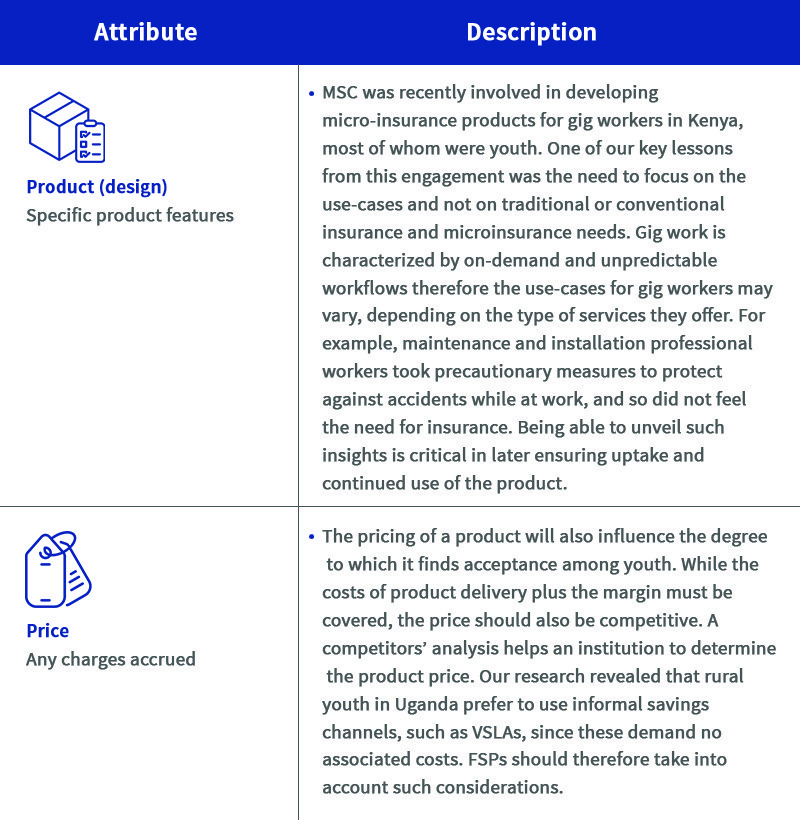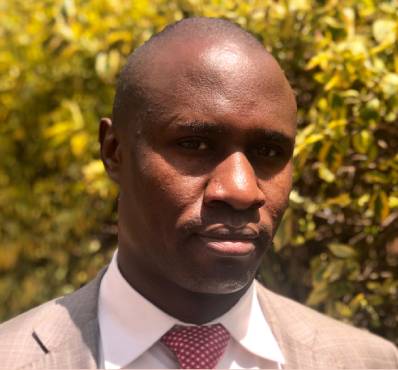Six aspects financial institutions must consider if they wish to serve young people
by Doreen Ahimbisibwe, Olivia Obiero and Thomas Bariti
Sep 7, 2020
4 min
Many financial service providers (FSPs) wish to serve youth but lack appropriate products and services that suit their needs. In this blog, we highlight prominent aspects that financial institutions need to focus on as they design and deliver financial services to youth.
In the previous blog, we looked at why financial institutions should focus on youth. We examined the financial needs of the youth, the constraints at the demand and supply sides, the perceptions and reality of youth on financial services, and the business case for financial institutions to focus on youth. From experience, we know that many financial service providers (FSPs) wish to serve youth but lack appropriate products and services that suit their needs. In this blog, we highlight prominent aspects that financial institutions need to focus on as they design and deliver financial services to youth.
FSPs must consider the following six aspects if they wish to serve youth profitably and successfully:
- The youth are not a homogeneous group. We often hear FSPs say that they want to design products that will “generally” appeal to the youth. This risks lumping youth under one segment and one category. Young people who practice agriculture, for instance, do not have the same needs as those who operate retail shops. Those involved in agriculture need loan disbursement, repayments, and savings mobilization to be structured as per the agricultural cycle. Meanwhile, youth in retail businesses have different needs and demands. Product development, therefore, should be targeted according to business activity, geography, and ability to provide collaterals.
- FSPs need to understand whether regulation allows youth to access financial services and if not, what alternatives they can use. In Uganda, for example, anyone under the age of 18 are not allowed to open up a bank account. FSPs need to think creatively to find alternatives to formal identification and guarantee requirements. Some FSPs have resolved this challenge in KYC by requesting those younger than 18 years to come along with a trusted guardian who submits their KYC and operates the account jointly with them until they turn 18.
- The youth lack collateral. Most young people are either students or have just started work or a relatively young enterprise. Therefore, they do not have the usual collateral that FSPs require, such as land title and car logbook. They, however, might be able to provide collateral in the form of chattels, which may include business or household items. For others who lack collateral, group members can provide a guarantee to access the loans. FSPs should be flexible to serve the youth and consider starting them off with small amounts and gradually increasing these amounts over time based on their performance.
- FSPs need a multi-pronged strategy for risk management. Some FSPs prefer to use guarantees to manage the risks or use social funds and crowdfunding. In this case, when the youth fail to repay their loans or some of the transaction charges they incur, they have a fund in place to fall back to. For example,
- Some FSPs in Africa have used guarantee funds to cater to the risks that farmers encounter. Such guarantee funds can also be considered in youth financing. The Ugandan government through the Agriculture Credit Facility provides interest-free loans to selected financial institutions to on-lend to small- and medium-sized value chain actors. This enables the actors to access cheaper credit. The FSPs on the other hand can obtain a 50% reimbursement on the loans after they lend to the value chain actors.
- The Nike Foundation covered transaction costs for adolescent girls who wanted to open up accounts at two FSPs in Uganda for two years. This offered a twofold advantage. Not only did this cover the FSP’s operational costs on the accounts, but also allowed the girls to grow their savings and appreciate the value of saving in a safe space.
- FSPs require to show buy-in and commitment from their top governance and executives toward serving the youth. This will involve training staff on how to serve youth with respect and dignity. They would also need performance metrics and reporting formats to monitor uptake and follow-up of the youth portfolio.
- Some youth need non-financial services to enable them to gain further knowledge and skills and run their enterprises professionally and efficiently. The FSPs can offer these non-financial services if they collaborate with a third party. For example, a few years ago, the Population Council partnered with Finance Trust Bank and FINCA—both located in Uganda—to provide financial education to adolescent girls who opened accounts at these institutions. Opportunity Bank Uganda has also engaged providers like Teach a Man to Fish to equip customers with business management skills including record keeping, customer care skills, digital and financial literacy, and networking. To bring all these opportunities and issues together, FSPs must use a systematic approach to product development for youth. MSC uses the 8Ps Framework to do this, as outlined below.



In conclusion, FSPs should design products and services that reflect the diversity of youth. Products should vary by demographic parameters, such as age, education, and geography or life cycle stage and economic occupations, just as with older clients. The major product differences lie in marketing, delivery mechanisms, and in the accompanying non-financial services. Taken together, these specially designed products will be critical for building a young person’s capacity to save, manage their money, and generate income.
 by
by  Sep 7, 2020
Sep 7, 2020 4 min
4 min



Leave comments